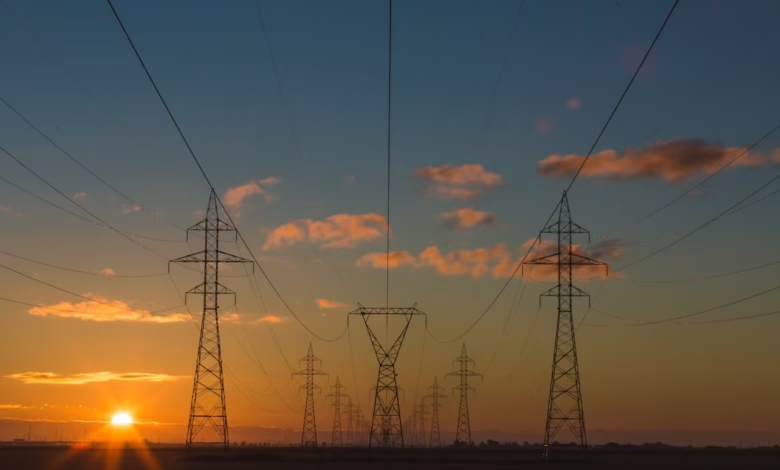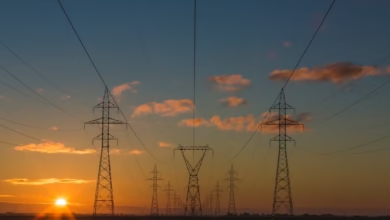Global Energy Trends: Navigating the Shift to Renewable Energy and the Future of Energy Security

As the world grapples with the pressing challenges of climate change and resource depletion, the landscape of global energy consumption and production is undergoing significant transformation. The shift towards renewable energy sources, such as solar power, wind energy, and hydropower, is reshaping energy markets and driving innovations in energy efficiency and storage solutions. In this article, we will explore the emerging global energy trends that are influencing how energy is consumed and produced worldwide. We will delve into the pivotal role of renewable energy in the energy transition, highlighting the latest advancements and innovations that are paving the way toward a sustainable future. Additionally, we will examine the complexities of energy security and policy, considering the balance between fossil fuels, nuclear energy, and green energy solutions. By understanding these dynamics, we can gain valuable insights into the future of energy investment, transportation, and economics, ultimately fostering a resilient energy landscape that can withstand the tests of time and climate change. Join us as we navigate the current shifts in global energy trends and their implications for our planet and society.
- 1. Emerging Global Energy Trends: Shifts in Consumption and Production Patterns
- 2. The Role of Renewable Energy in the Global Energy Transition: Insights and Innovations
- 3. Energy Security and Policy: Navigating Fossil Fuels, Nuclear Energy, and Green Energy Solutions
1. Emerging Global Energy Trends: Shifts in Consumption and Production Patterns
The global energy landscape is undergoing significant transformations as countries adapt to new consumption and production patterns. Emerging global energy trends reflect a decisive shift towards renewable energy sources, driven by the urgent need to address climate change and enhance energy security.
In recent years, there has been a marked increase in the adoption of green energy technologies such as solar power, wind energy, and hydropower. These sources of renewable energy are not only reducing reliance on fossil fuels but also reshaping energy markets across the globe. According to the International Energy Agency (IEA, 2022), renewable energy accounted for nearly 30% of the world’s electricity generation in 2021, a trend expected to continue as countries implement more aggressive energy policies aimed at decarbonization.
Nuclear energy also plays a crucial role in the energy transition, providing a stable source of low-carbon power. As nations seek to diversify their energy portfolios, investments in nuclear technology and energy storage solutions are increasing. Energy storage, in particular, is vital for managing the intermittency of renewable resources and enhancing overall energy efficiency in the system.
The rise of electric vehicles (EVs) is another significant trend impacting energy consumption. Governments are promoting EV adoption through incentives and developing smart grids to accommodate increased electricity demand. This shift not only influences energy transportation but also necessitates advancements in energy R&D to improve battery technologies and integrate renewable energy into transportation networks.
Moreover, the global energy investment landscape is evolving. There is a pronounced focus on innovative energy solutions such as hydrogen energy and carbon capture technologies, which are critical for reducing emissions from thermal energy production and industrial processes. Distributed energy systems, including localized solar installations and community wind projects, are gaining traction, enabling greater energy autonomy and resilience.
As energy exports and imports shift in response to changing production patterns, countries are re-evaluating their energy policies to ensure energy security and economic stability. The transition from fossil fuels to more sustainable options reflects not only environmental considerations but also strategic economic interests in a rapidly evolving global energy economy.
In summary, the emerging global energy trends signify a pivotal moment in energy consumption and production patterns. The ongoing energy transition, bolstered by innovations and advancements in renewable technologies, is reshaping how the world meets its energy needs while addressing the pressing challenges of climate change.
References
International Energy Agency (IEA). (2022). World Energy Outlook 2022. https://www.iea.org/reports/world-energy-outlook-2022
2. The Role of Renewable Energy in the Global Energy Transition: Insights and Innovations
The global energy transition is fundamentally reshaping how energy is consumed and produced, with renewable energy playing a pivotal role in this transformation. As countries strive to reduce their reliance on fossil fuels and mitigate climate change, innovations in renewable energy technologies are becoming increasingly vital.
One of the most significant trends in renewable energy is the rapid growth of solar power and wind energy. These sources have not only become more affordable due to advancements in energy R&D but also more efficient, allowing for increased energy output with minimal environmental impact. The integration of smart grids enhances the management of these variable energy sources, ensuring a stable and reliable energy supply even as we transition away from traditional thermal energy systems.
Hydropower and bioenergy continue to be essential components of the energy mix, providing consistent energy generation and contributing to energy security. Furthermore, offshore energy projects, particularly in wind and solar, are gaining traction, presenting new opportunities for energy investments and development.
Energy storage technologies are crucial in this landscape, enabling the effective use of renewable energy by storing excess energy generated during peak production times. This innovation supports the broader adoption of electric vehicles and distributed energy systems, facilitating a shift towards a more decentralized energy model. Moreover, carbon capture technologies are being explored to further reduce emissions from existing fossil fuel infrastructure, aligning with global energy policy goals aimed at achieving net-zero emissions.
The increasing demand for renewable energy is also reshaping energy markets, influencing energy exports and imports as countries seek to harness their natural resources more sustainably. The transition towards green energy not only addresses climate change but also revitalizes energy economies, driving job creation and fostering innovation.
In conclusion, the role of renewable energy in the global energy transition is multifaceted and critical. With ongoing investments in energy innovations, the world is moving towards a more sustainable and resilient energy future, where renewable sources will dominate and contribute significantly to global energy trends.
References:
International Energy Agency. (2023). World Energy Outlook 2023. Retrieved from https://www.iea.org/reports/world-energy-outlook-2023
Renewable Energy Policy Network for the 21st Century. (2023). Renewables 2023 Global Status Report. Retrieved from https://www.ren21.net/reports/global-status-report/
3. Energy Security and Policy: Navigating Fossil Fuels, Nuclear Energy, and Green Energy Solutions
Energy security and policy are at the forefront of discussions surrounding global energy trends as nations navigate the complexities of fossil fuels, nuclear energy, and renewable energy solutions. As the world faces the pressing challenges of climate change and the need for sustainable energy practices, the interplay between these energy sources becomes crucial.
Fossil fuels have long been the backbone of energy production, yet their environmental impact has prompted a significant shift in energy policy. Countries are increasingly recognizing the importance of energy efficiency and the necessity to reduce reliance on carbon-intensive fuels. This transition is not merely about moving away from fossil fuels; it involves a comprehensive strategy that includes investments in renewable energy technologies and innovations.
Nuclear energy presents a paradox in the discussion of energy security. On one hand, it offers a low-carbon alternative capable of generating substantial energy output. On the other hand, concerns about safety, waste management, and public perception can hinder its growth. However, advancements in energy R&D and the development of next-generation nuclear technologies could enhance its role in a balanced energy portfolio.
Renewable energy is emerging as a vital component of energy security strategies worldwide. Sources such as solar power, wind energy, hydropower, and bioenergy are becoming more prevalent, driven by decreasing costs and technological advancements. The integration of these resources into energy markets hinges on improvements in energy storage and smart grid technologies, which facilitate efficient energy distribution and consumption.
The energy transition is also influenced by the rise of distributed energy systems and electric vehicles. These innovations empower consumers to generate and manage their own energy, thus enhancing resilience in energy transportation and reducing dependence on centralized power sources. Furthermore, energy policies are increasingly focusing on carbon capture technologies and hydrogen energy as potential solutions to mitigate emissions while meeting growing demand.
As countries engage in energy exports and imports, understanding energy economics plays a critical role in shaping energy policy. This dynamic landscape requires strategic investments in various energy sectors to ensure a stable and secure energy future. As the global community continues to adapt, the integration of diverse energy sources, alongside robust energy policies, will be essential for achieving energy security while addressing the challenges posed by climate change.
In conclusion, navigating the complex relationship between fossil fuels, nuclear energy, and renewable sources requires a multifaceted approach. By prioritizing energy efficiency, investing in innovations, and embracing diverse energy solutions, countries can enhance their energy security while contributing to a more sustainable global energy landscape.
In conclusion, the landscape of global energy trends is undergoing a remarkable transformation driven by shifts in consumption and production patterns. As we navigate the complexities of energy security and policy, it is evident that the integration of renewable energy sources—such as solar power, wind energy, and bioenergy—is crucial for a sustainable energy transition. Innovations in energy storage, smart grids, and carbon capture technologies are paving the way for enhanced energy efficiency and the reduction of reliance on fossil fuels.
Furthermore, the role of nuclear energy and thermal energy should not be overlooked, as they contribute significantly to energy markets and energy exports. As countries strive to meet their energy demands while addressing climate change, investments in offshore energy and hydrogen energy will play a pivotal role in shaping the future of energy transportation and distributed energy solutions.
Ultimately, the ongoing evolution of energy economics and policy will determine the trajectory of global energy trends. By embracing energy innovations and prioritizing sustainable practices, we can create a resilient energy landscape that not only secures our energy needs but also fosters a healthier planet for generations to come.





